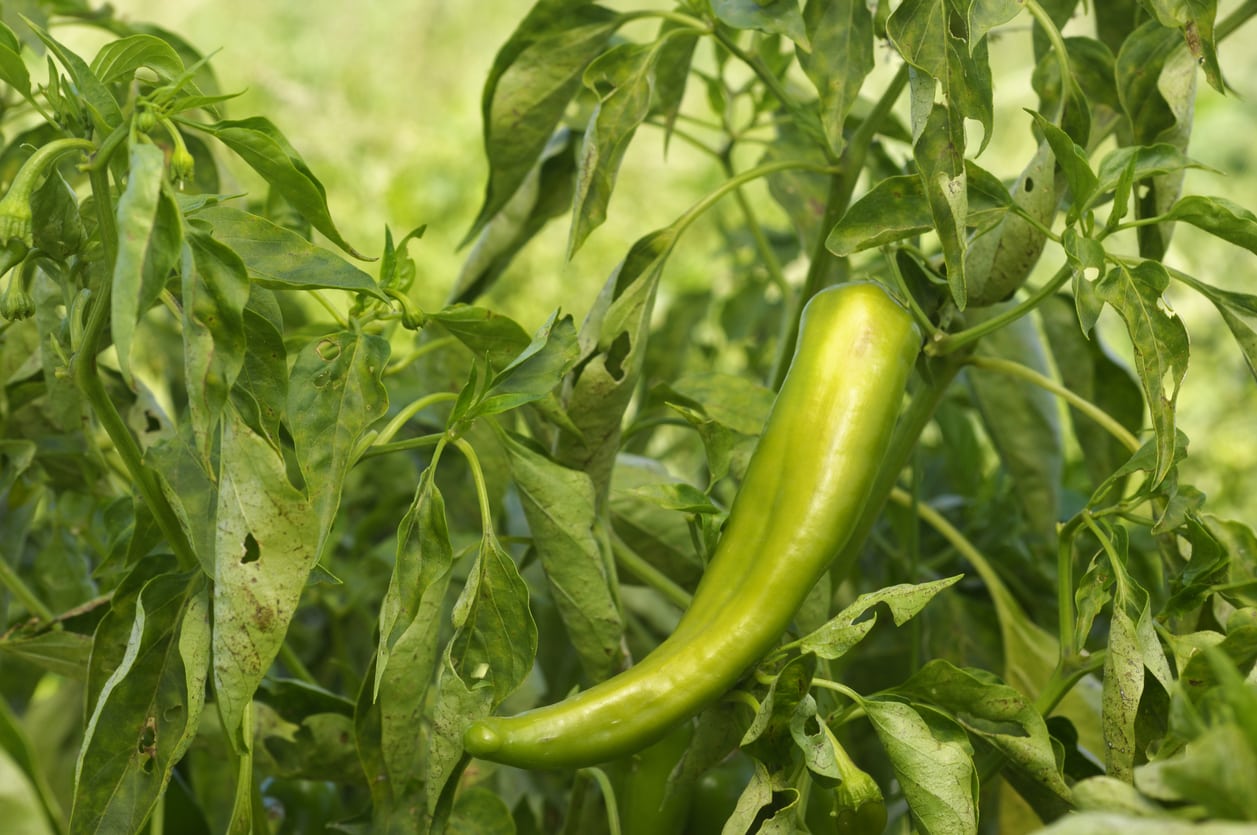Anaheim Pepper Information: Learn About Anaheim Pepper Growing


Anaheim may make you think of Disneyland, but it’s equally famous as a popular variety of chili pepper. Anaheim pepper (Capsicum annuum longum 'Anaheim') is a perennial that is easy to grow and spicy to eat. If you are considering Anaheim pepper growing, read on. You’ll find lots of Anaheim pepper information as well as tips for how to grow Anaheim peppers.
Anaheim Pepper Information
Anaheim pepper grows as a perennial and can produce peppers over three years or more. It is an erect plant that grows to 1.5 feet (46 cm.) tall. It is mild rather than mouth-scorching and excellent for cooking and stuffing. For those interested in Anaheim pepper growing, note that the plant is easy to grow. All you need is a basic knowledge of Anaheim pepper care.
How to Grow Anaheim Peppers
Getting informed about the basic growth requirements of the Anaheim will help you produce a healthy, low-maintenance plant. Generally, Anaheim pepper growing is recommended in USDA plant hardiness zones 5 through 12. Anaheim peppers are tender vegetables, so you’ll need to wait until the soil is warm and freezes have passed to move the seedlings outdoors. If you are planting seeds, start them indoors a month and a half before the last frost date in your area. Don’t plant them too deep, only about 0.2 inches (.05 cm.) deep in a location with full sun. Like many veggies, Anaheim peppers need sun to grow and thrive. According to Anaheim pepper information, the plants prefer sandy loam as soil. Check the acidity of the soil and adjust to a pH of between 7.0 and 8.5. Space the seedlings a couple feet (61 cm.) apart, or a little less in raised beds. Irrigation is an important part of Anaheim pepper care. You need to water the pepper plants regularly during the growing season and keep the soil moist. If the plants don’t get enough water, the fruit can become stunted. On the other hand, take care not to provide too much water, as root rot and other fungal issues can occur. Use a few tablespoons of 5-10-10 fertilizer in a trench around each plant some 4 inches (10 cm.) from the stem.
Using Anaheim Peppers
Once your pepper harvest begins, you’ll need to find different ways of using Anaheim peppers. These peppers are mild enough to be eaten raw, but they are also excellent stuffed. They register between 500 and 2,500 heat units on the Scoville Scale, depending on the soil and sun the plants received. Anaheims are one of the peppers frequently used for making Chili Relleno, a popular Mexican-American specialty. The peppers are roasted and stuffed with cheese, then dipped in egg and fried.
Gardening tips, videos, info and more delivered right to your inbox!
Sign up for the Gardening Know How newsletter today and receive a free copy of our e-book "How to Grow Delicious Tomatoes".

Teo Spengler is a master gardener and a docent at the San Francisco Botanical Garden, where she hosts public tours. She has studied horticulture and written about nature, trees, plants, and gardening for more than two decades. Her extended family includes some 30 houseplants and hundreds of outdoor plants, including 250 trees, which are her main passion. Spengler currently splits her life between San Francisco and the French Basque Country, though she was raised in Alaska, giving her experience of gardening in a range of climates.
-
 Looking For Plants To Give You The Soft And Fuzzies? Try These 5 Fuzzy Leaf Plant Options
Looking For Plants To Give You The Soft And Fuzzies? Try These 5 Fuzzy Leaf Plant OptionsLovers of texture, drama, silver foliage and tactile plants will adore these special sensory garden additions. These fuzzy leaf plant options will leave you all aglow
By Susan Albert
-
 Get Ready For A Summer Of Hummers! Grow These Full Sun Hummingbird Plants and Flowers
Get Ready For A Summer Of Hummers! Grow These Full Sun Hummingbird Plants and FlowersIf you’re lucky enough to enjoy a sunny backyard, make sure you are maxing out on your pollinator opportunities and grow these full sun hummingbird plants and flowers
By Tonya Barnett